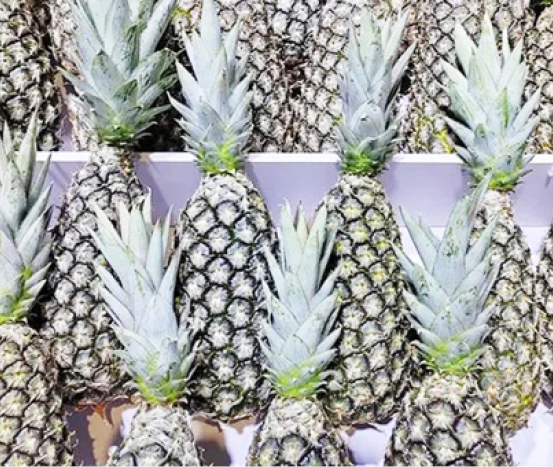Benin’s sugarloaf pineapple, dubbed ‘the sweetest pineapple in the world,’ is on show for the first time at the ongoing China International Import Expo in Shanghai and long queues are forming to taste it.
“I’m glad our Chinese friends can sample Benin’s pineapples,” Elysee Kahomey, Benin’s assistant ambassador to China, told Yicai in fluent Chinese. The Beninese pineapple, also known as ‘sugar loaf,’ has a unique taste and is very popular in Europe.
One ton of pineapples were shipped immediately after being picked in the west African country and arrived in Shanghai on Nov. 3 so that visitors to the Expo could try them, Kahomey said.
“Sweet, fresh and juicy” is how most people describe it, Yicai learned.
How onion proceeds stimulate cultivation in Plateau despite expensive input
7 lessons for young agribusiness entrepreneurs
Benin is the fourth largest pineapple exporter in Africa, with an annual output of about 400,000 tons, and the main export destination is Europe.
Benin can increase its pineapple planting area should there be sufficient demand in China, Simon Adovelande, Benin’s ambassador to China, told Yicai.
“We hope that in the near future, Benin’s pineapple exports to China will reach 300,000 tons a year. Bringing Beninese pineapples to China will undoubtedly be a highlight of my career,” he added.
“The CIIE is an excellent platform for African products to enter the Chinese market and we hope to make new progress in agricultural cooperation and trade between China and Benin through the expo,” Adovelande said.
Benin also brought shea butter, honey, nuts and other agricultural produce to the CIIE. Although it is only the second day of the event, many Chinese buyers have expressed a strong interest in these products, Kahomey said.
Kenya’s fresh avocados were the trending fruit at the last CIIE and today, 30 per cent of the east African country’s avocados are exported to China. This figure is expected to increase and boost the annual income of Kenyan growers by between 30 per cent and 50 per cent, according to the Kenyan agricultural department.
SOURCE: YICAI

 Join Daily Trust WhatsApp Community For Quick Access To News and Happenings Around You.
Join Daily Trust WhatsApp Community For Quick Access To News and Happenings Around You.


